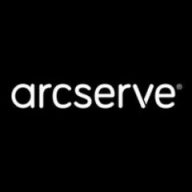

Arcserve UDP and OpenText Recover are key players in the data protection and recovery market. Arcserve UDP often appears as the budget-friendly option with excellent support, whereas OpenText Recover stands out for offering premium features that many users deem worth the higher cost.
Features: Arcserve UDP provides comprehensive data backup options, focusing on ease of use and efficient recovery. OpenText Recover offers robust recovery capabilities, supports a wide range of systems, and presents advanced data management features. OpenText Recover's extensive features provide a wider resource pool for complex environments.
Ease of Deployment and Customer Service: Arcserve UDP is recognized for its straightforward deployment process, complemented by responsive customer service. OpenText Recover, although slightly more complex due to its wide-ranging features, benefits from strong customer service support, making deployment smoother.
Pricing and ROI: Arcserve UDP is favored for its cost-effectiveness with a promising ROI, suitable for organizations focused on budget efficiency. OpenText Recover requires a higher investment initially; however, many users find its advanced capabilities and long-term benefits justify the expense.
| Product | Market Share (%) |
|---|---|
| Arcserve UDP | 2.2% |
| OpenText Recover | 0.3% |
| Other | 97.5% |


| Company Size | Count |
|---|---|
| Small Business | 23 |
| Midsize Enterprise | 10 |
| Large Enterprise | 9 |
OpenText Recover offers businesses a robust data protection solution, ensuring continuity and data recovery across key infrastructures.
With OpenText Recover, organizations are empowered with reliable recovery measures that protect mission-critical data, featuring seamless integration across various platforms. The technology aligns with industry's best practices, delivering comprehensive safeguards that enhance resilience.
What are the key features of OpenText Recover?OpenText Recover is widely implemented across industries like finance, healthcare, and telecommunications. It supports data integrity and swift recovery in financial systems, ensures patient data is safeguarded in healthcare, and helps telecom providers maintain uninterrupted services. The diverse applications make it a versatile tool in maintaining critical operations.
We monitor all Disaster Recovery (DR) Software reviews to prevent fraudulent reviews and keep review quality high. We do not post reviews by company employees or direct competitors. We validate each review for authenticity via cross-reference with LinkedIn, and personal follow-up with the reviewer when necessary.